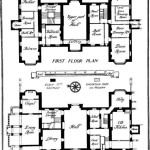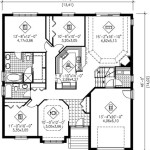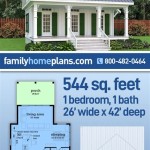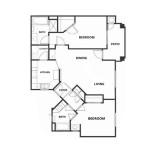Floor Plan of a House with Measurements: A Comprehensive Guide
A floor plan is a scaled diagram of a house, showing the layout of rooms, walls, doors, windows, and other essential features. It is a crucial tool for architects, designers, contractors, and homeowners, providing a visual representation of the spatial arrangement and dimensions of a building. Understanding floor plans, particularly those that include measurements, is essential for effective planning, design, and construction. This article delves into the intricacies of floor plan readings, focusing on the importance and interpretation of measurements.
Understanding the Basics of Floor Plans
Floor plans are typically drawn to scale, meaning that the dimensions of the house are reduced proportionally to fit on a sheet of paper or a digital document. The scale is indicated on the floor plan, usually as a ratio, such as 1:100 or 1:50. This means that every inch on the plan represents 100 or 50 inches in real life, respectively. Understanding the scale is crucial for accurately interpreting the dimensions of the house.
Floor plans are usually drawn using standard symbols and conventions. Walls are typically represented by solid lines, while doors and windows are shown with specific symbols. Dimensions, expressed in feet or inches, are usually placed next to walls, doors, or windows. These dimensions indicate the length, width, or height of the specific feature. Additionally, notes and labels may be included to provide further details about the design, materials, or appliances.
Interpreting Measurements on Floor Plans
Interpreting measurements on floor plans requires careful attention and understanding of the symbols and conventions used. Here's a breakdown of common measurements and their significance:
Length and Width: These measurements are usually given alongside walls, doors, and windows. They indicate the overall dimension of the feature, providing essential information for furniture placement, room size calculations, and construction. For instance, a measurement "12' x 15'" indicates a wall that is 12 feet long and 15 feet wide.
Door and Window Sizes: These measurements are usually given in a format like "3'0" x 7'0", which means a door or window that is 3 feet wide and 7 feet tall. This information is critical for selecting appropriate doors and windows and ensuring adequate clearance for movement.
Room Dimensions: Floor plans may include overall room dimensions, indicating the total area of the room. These measurements are important for calculating floor space, planning furniture arrangement, and determining the appropriate heating and cooling requirements for the room.
Detailed Measurements: Some floor plans may include detailed measurements for specific features, such as the depth of a closet, the width of a fireplace, or the size of a built-in cabinet. These measurements provide greater accuracy for construction and help ensure that all features are designed and built to the specified dimensions.
Utilizing Floor Plans with Measurements
Floor plans with measurements are essential tools for various purposes:
Home Design and Planning: Floor plans allow architects, designers, and homeowners to visualise the layout of a house, experiment with different layouts, and make informed decisions about room sizes, flow, and functionality. Measurements help ensure that furniture and appliances fit comfortably and that the overall design meets the needs of the occupants.
Construction and Renovation: Floor plans with measurements serve as blueprints for construction, providing essential information for contractors, builders, and suppliers. They specify the size and location of walls, doors, windows, and other features, guaranteeing that the house is constructed according to the approved design.
Home Staging and Interior Design: Floor plans can be used by interior designers to visualize furniture placement, create a spatial flow, and select appropriate décor and furnishings. Measurements help ensure that furniture fits comfortably, allowing designers to create a cohesive and functional interior space.
Real Estate and Property Management: Floor plans are valuable tools for real estate agents and property managers. They provide a clear visual representation of the property, enabling potential buyers or tenants to understand the layout and dimensions. Measurements assist in determining the square footage of the property, which is a crucial factor in pricing and property valuation.
Floor plans with measurements are crucial for successful home design, construction, and renovation projects. Understanding the basics of floor plans, interpreting measurements accurately, and effectively utilizing this information can lead to a well-designed, functional, and comfortable home.

12 Examples Of Floor Plans With Dimensions

How To Read A Floor Plan With Dimensions Houseplans Blog Com

House Plans How To Design Your Home Plan

12 Examples Of Floor Plans With Dimensions

Floor Plans With Dimensions Including Examples Cedreo

Floor Plan With Dimensions Guide To Drawings Small House Blueprints Design S

12 Examples Of Floor Plans With Dimensions

A Floorplan Of Single Family House All Dimensions In Meters Scientific Diagram

How To Read A Floor Plan With Dimensions Houseplans Blog Com

How To Read A Floor Plan And Design The Perfect Home For You








